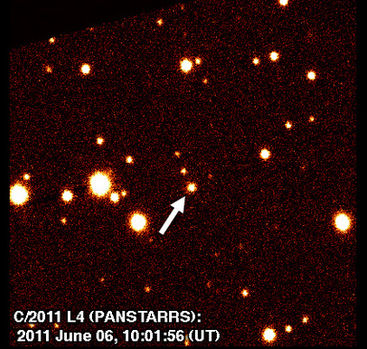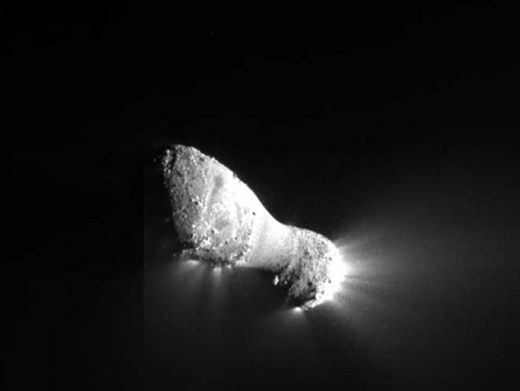
© Institute for Astronomy/University of Hawaii/Pan-STARRSDiscovery image of the newfound comet C/2011 L4 (PANSTARRS), taken by Hawaii's Pan-STARRS 1 telescope.
A newfound comet discovered by a telescope designed to hunt for dangerous asteroids will make its closest pass by Earth in 2013 and should be visible to the naked eye when it draws near, astronomers say.
Hawaii's Pan-STARRS 1 telescope detected the comet, which is called C/2011 L4 (PANSTARRS), on the night of June 5 and 6, and the discovery was confirmed by follow-up observations with a different instrument a day later. The comet will likely come within about 30 million miles (50 million kilometers) of the sun in February or March 2013 - about the same distance as the planet Mercury, researchers said.
During its closest approach to Earth in two years, comet C/2011 L4 (PANSTARRS) likely to be visible low in the western sky shortly after sunset, weather permitting. Skywatchers interested in seeing the newfound icy wanderer should look up then, because they may never get another chance to see it.
"The comet has an orbit that is close to parabolic, meaning that this may be the first time it will ever come close to the sun, and that it may never return," said the University of Hawaii's Richard Wainscoat in a statement. Wainscoat helped confirm the comet's existence.
Right now, C/2011 L4 (PANSTARRS) is about 700 million miles (1.2 billion km) from the sun, placing it beyond the orbit of Jupiter. It is currently so faint that only telescopes with sensitive electronic detectors can pick it up.
The comet's clunky moniker is slightly unusual. Comets are usually named after their discoverers, but in this case such a large team of researchers helped spot the icy wanderer that it took the name of the telescope instead.


